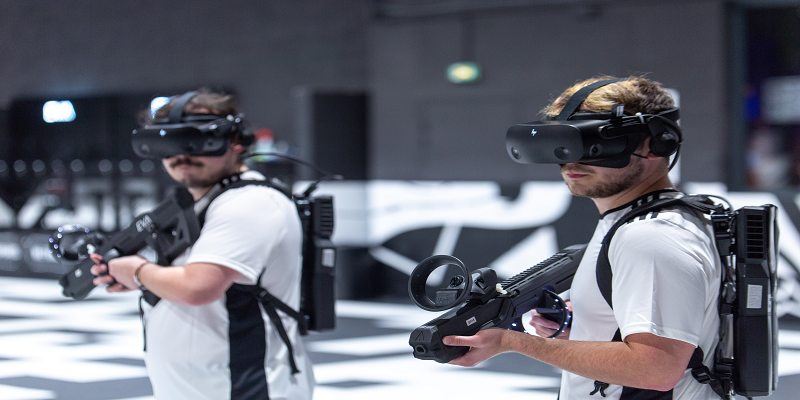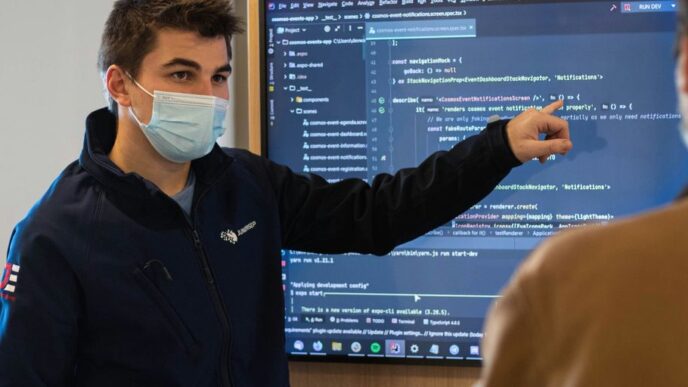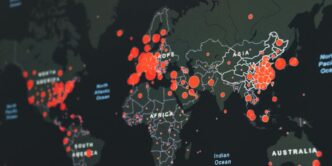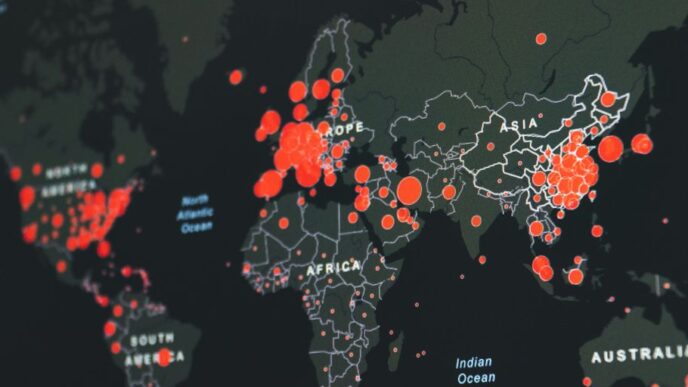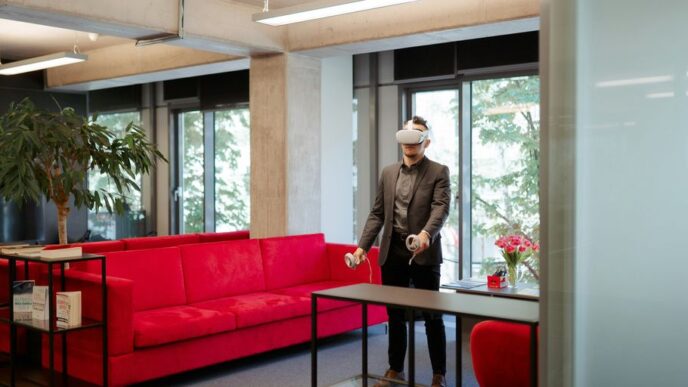Welcome to the future, where technology is no longer limited to screens and buttons. The world of spatial computing has arrived, and it’s taking the tech industry by storm. Imagine a world where you can interact with virtual objects as if they were real, or navigate through an augmented reality overlay on top of your physical surroundings. This is the exciting new frontier that spatial computing has opened up – and in this blog post, we’re going to explore how it’s revolutionizing technology as we know it. Join us as we delve into this cutting-edge field and discover what lies ahead for the next generation of digital experiences.
Introduction to Spatial Computing
The term “spatial computing” has been used in a variety of ways, but is generally understood to refer to the use of computer technology to process and interact with data and information in three-dimensional (3D) space. While this may sound like a relatively new concept, spatial computing has actually been around for quite some time – think flight simulators and video games. However, it is only in recent years that the technology has advanced to the point where it can be used for more practical applications.
There are a number of reasons why spatial computing is becoming increasingly popular. First, the cost of 3D sensors and other hardware required for spatial computing has come down significantly in recent years. Second, there has been a lot of progress made in the development of algorithms that can make sense of 3D data. Advances in computation power and storage capacity have made it possible to store and process large amounts of 3D data quickly and easily.
Spatial computing is already being used in a number of different fields, including architecture, engineering, construction, urban planning, medicine, gaming, and entertainment. It is also being used by researchers to study everything from human behavior to the impacts of climate change. The potential applications of spatial computing are limited only by our imaginations – which is why it is so exciting.
What is Spatial Computing?
Spatial computing is a term used to describe the use of computer technology to simulate or create three-dimensional (3D) environments. It is also sometimes referred to as 3D computing or virtual reality (VR).
The use of spatial computing has become increasingly popular in recent years, as the technology has become more sophisticated and affordable. Spatial computing can be used for a variety of purposes, including entertainment, education, training, and design.
There are a number of different technologies that fall under the umbrella of spatial computing, including virtual reality headsets, augmented reality devices, and 3D printers.
How is Spatial Computing Revolutionizing Technology?
The way we interact with technology is changing, and it’s all thanks to spatial computing. With spatial computing, digital content is no longer confined to screens and can now exist in the real world. This allows for a more natural and immersive experience that feels more like real life.
So how is spatial computing revolutionizing technology? For one, it’s making virtual reality more realistic than ever before. By being able to see and interact with digital content in the real world, VR becomes much more believable and immersive. Additionally, spatial computing is also changing the way we interact with AR. Instead of having to look down at our phones all the time, AR can now be integrated into our everyday lives in a much more seamless way.
Ultimately, spatial computing is giving us a new way to interact with technology that feels more natural and intuitive. It’s still early days for this technology, but the potential applications are limitless. So far, we’ve only scratched the surface of what’s possible with spatial computing. As this technology continues to develop, we can only imagine the incredible things that will be made possible.

Benefits of Spatial Computing
There are many benefits of spatial computing, which is why it is becoming increasingly popular in a variety of industries. Perhaps the most obvious benefit is that it allows people to interact with computer-generated images in a more natural way. For example, instead of using a keyboard and mouse to navigate a 3D model, users can simply walk around it and view it from different angles. This makes it much easier to get a feel for the size and shape of an object, and to understand how it works.
In addition, spatial computing can be used to create virtual reality (VR) experiences. This means that users can immerse themselves in an artificial environment and interact with it as if they were really there. This has huge potential for education, training, and entertainment applications. For instance, students could use VR to explore historical sites or tour museums without leaving their classrooms. Doctors could use VR to simulate surgeries, thereby gaining valuable experience without putting patients at risk. And gamers could use VR to play realistic games that transport them to other worlds.
Spatial computing is being used in a growing number of business applications. For example, architects and engineers can use VR to design buildings and products. Retailers can use VR to give customers virtual tours of their stores or showrooms. And manufacturers can use VR to create a virtual assembly line
Issues and Challenges with Spatial Computing
As with any new technology, there are always issues and challenges that come with its implementation and use. Spatial computing is no different. Some of the main issues and challenges faced with spatial computing include data privacy and security, data accuracy and quality, interoperability, and scalability.
Data privacy and security are always a top concern when it comes to any sort of technology that collects and stores data. With spatial computing, which relies heavily on data collection and storage, these concerns are even more heightened. There is a risk that sensitive data could be collected without users’ knowledge or consent, or that hackers could gain access to this data. Ensuring that data is collected and stored securely is essential to the success of spatial computing.
Another issue faced by spatial computing is data accuracy and quality. Since spatial computing relies on large amounts of data, it is essential that this data be accurate in order to produce reliable results. However, collecting accurate data can be difficult, especially when dealing with large geographical areas. In addition, the quality of the data can degrade over time, which can impact the reliability of results produced by spatial computing applications.
Interoperability is also an issue faced by spatial computing. In order for spatial computing applications to work effectively, they need to be able to share data with each other. However, different applications often use different formats for storing data, which can make it difficult for them to communicate with each other. This lack of interoperability can limit the effectiveness
Examples of Companies Using Spatial Computing
There are a number of companies that are using spatial computing to revolutionize technology. Here are a few examples:
- Google is using spatial computing to create better maps. By mapping the world in 3D, they can provide users with more accurate information about their surroundings. This is especially helpful for people who are looking for directions or exploring new areas.
- Facebook is using spatial computing to create realistic virtual reality experiences. With the Oculus Rift, Facebook plans to allow users to explore other environments and interact with others as if they were actually there. This could have a huge impact on how we communicate and connect with others in the future.
- Microsoft is using spatial computing to create more natural and immersive experiences with its HoloLens headset. With HoloLens, users can see digital information overlaid in the real world around them. This allows for a more intuitive way of interacting with computers and could lead to some amazing applications in fields such as medicine and architecture.
- Magic Leap is another company that is working on creating realistic virtual reality experiences. However, instead of using a headset like Oculus Rift or HoloLens, Magic Leap uses what they call a “light field” display which projects images directly onto your retina. This results in a much more realistic and immersive experience than anything else currently available.
Conclusion
Spatial computing is a rapidly evolving field that promises to revolutionize technology in the next few years. Leveraging advances in AR and VR, it enables users to experience digital content as if they were actually present, creating an entirely new way of interacting with data and information. With its potential for transforming the way we interact with our environment and each other, spatial computing opens up exciting opportunities for businesses and consumers alike to explore a world of possibilities.

